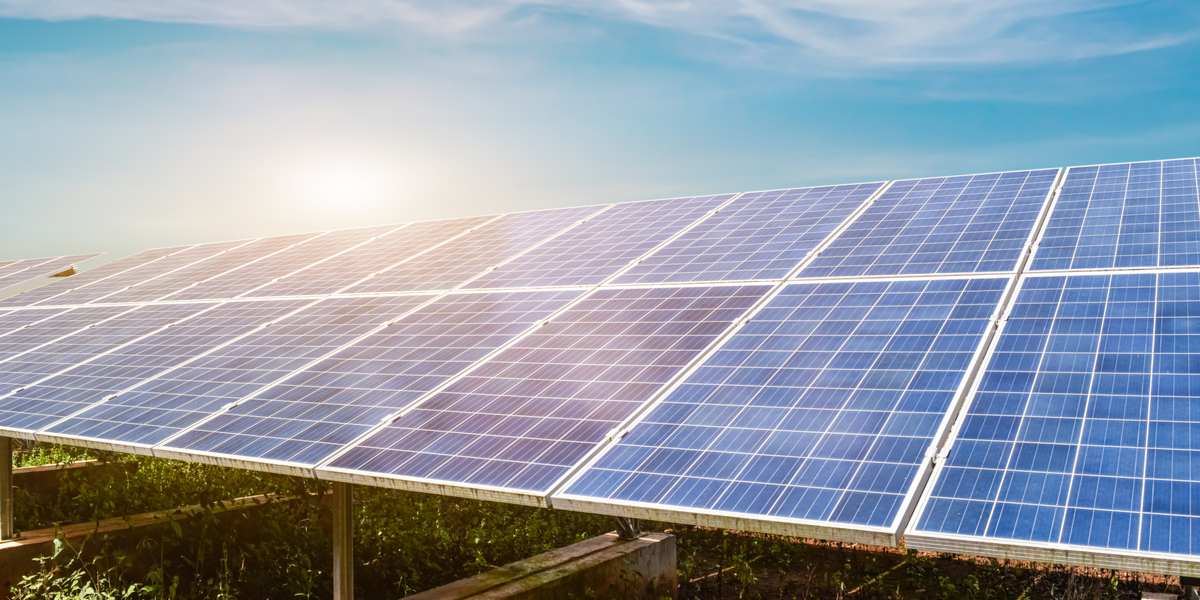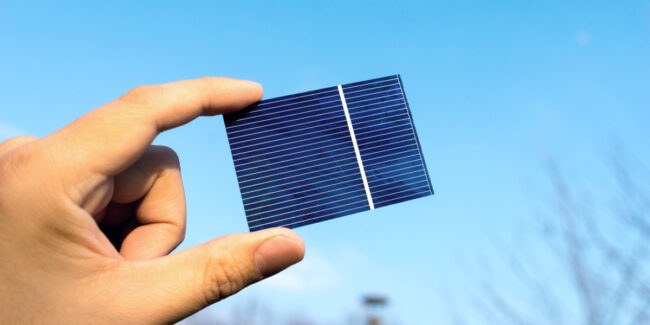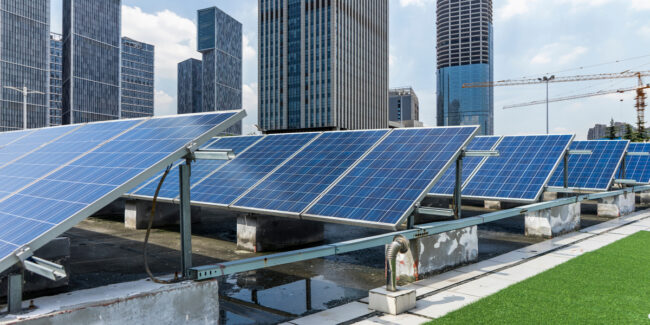
Since its discovery by French-born physicist Edmond Becquerel, photovoltaic (PV) technology has evolved into a top modern-day source of clean energy. With the latest advances, such as building-integrated photovoltaics (BIPV), engineers can achieve higher-efficiency power generation for industrial, commercial, and residential applications at comparatively lower costs. This article reveals how photovoltaics work, differentiates between solar panels and photovoltaic cells, and explores some common types of photovoltaic cells while highlighting the benefits of BIPV.
Photovoltaics Process Explained
The photovoltaic process comprises photon absorption, electron flow (electric current) generation, energy storage, and photon loss minimization. This complex process leverages the capabilities of photovoltaic cells in electrical energy generation and utilization. Photovoltaic cells include semiconductor materials that absorb sun-based photons and generate electron flow. Silicon-based photovoltaic cells are one of the most widely adopted cells in solar energy generation.
Photons strike the photovoltaic cell to release electrons from their atoms. These excited electrons randomly move about and ultimately get attracted to positively-charged materials. To ensure adequate electron flow in the PV system, engineers integrate two pieces of silicon doped with atoms of phosphorous and boron. By doping the sun-facing silicon with the negatively-charged phosphorous, and the other silicon with positively-charged boron, engineers achieve an electric field at their junction between the two layers—ultimately ensuring the excited electrons flow in the same electrons.
Moreover, electrons move to the n-side while holes drift to the p-side, causing direct current (DC) flow to the external circuit in the form of electrical energy. The PV system ensures adequate electrical energy storage into an electrical load, typically batteries.
Solar Panels vs. Photovoltaic Cells
Several people mistakenly use the terms solar panels and photovoltaic cells interchangeably. Both components make up parts of a typical PV system. However, the role solar panels and photovoltaic cells play in the efficient functioning of PV systems differentiates them from one another. Now, let’s explore the role of these components in a solar PV system.
The Role of Photovoltaic Cells
PV cells ensure DC generation and electrical energy storage in the PV system. The cells absorb photons from solar radiation, which leads to electron excitement and electric field generation. Engineers achieve electrical energy storage with the aid of a conductor, which forces current out of the PV cell and into an electrical load. However, a single PV cell can only generate limited energy.
The Role of Solar Panels
By integrating multiple PV cells to create a solar panel, engineers efficiently handle energy generation limitations. A solar panel comprises multiple interconnected PV cells to generate higher currents and, consequently, higher amounts of energy. Moreover, solar panels also provide protective cases for individual PV cells, minimizing their susceptibility to external factor-induced damages.
Types of Photovoltaic Cells
Conversion efficiency is an essential criterion for PV cell selection. The latest PV tech advancements offer conversion efficiencies exceeding 25%. The top photovoltaic cell types widely adopted in various applications include:
- Crystalline silicon cells
- Thin-film cells
- Organic cells
- Perovskites

Crystalline Silicon Cells
This PV cell type accounts for over 95% of the solar cell market, offering a conversion efficiency range from 16.5 to 26.6%. Engineers manufacture crystalline silicon cells from silica-based silicon using several methods, including cold processing and pull-from-melt. With the low cost of silicon cells, PV systems remain a competitive source of electrical energy.
Thin-Film Cells
Engineers manufacture thin-film PV cells by depositing semiconductor materials, such as cadmium telluride, copper indium gallium selenide (CIGS), and non-crystalline (or amorphous) silicon on glass or plastic measuring a few microns. This PV cell type exhibits laboratory efficiencies of up to 23.3%.
Organic Cells
Engineers leverage the capabilities of organic molecules and polymers to develop these PV cells. Although they exhibit low conversion efficiencies and short lifespans, the cells double as low-cost alternatives in light of their manufacture. Similarly, photosynthesis-inspired dye-sensitized solar cells with photosensitive pigments are on the horizon for organic-based electricity generation.
Perovskites
The perovskite technology integrates organic and inorganic compounds to develop PV cells. Perovskites currently exhibit laboratory conversion efficiencies of up to 23.7%. The PV cell also offers several other benefits, including lightweight, high flexibility, and production cost-effectiveness.
Benefits of Building-Integrated Photovoltaics
Engineers achieve unprecedented photovoltaics efficiencies by replacing conventional building materials used in some common parts of a building, including roofs, facades, and skylines. This relatively new technology, widely known as building-integrated photovoltaics, offers several benefits over conventional solar system installations. Some of the benefits include:
Lower Costs in the Long-term
Although BIPV solutions can be expensive to incorporate into building design and construction in the short term, they offer lower costs and higher economic benefits in the long run. Existing incentives and tax advantages that come with BIPV lower their cost over a period compared with conventional building materials. In other words, while existing building materials are a liability to real estate owners, BIPV remains a source of revenue.
Energy Production Exceeds Power Consumption
Since the peak electricity production period aligns with the peak energy demand period, typically during the daytime, power consumption adequately and simultaneously offsets energy production, efficiently cutting down utility bills.
Minimized Tradeoff between Architectural Design and Solar System Integration
With BIPV, architects can adequately minimize the tradeoff between architectural designs and solar system integration due to the aesthetic and functionalities the technology offers modern-day buildings.

Trust Kaneka with Your Building-Integrated Photovoltaic Project
At Kaneka, we are dedicated to providing our clients with advanced energy management solutions. We can adequately meet all your solar energy needs in an efficient, timely, and cost-effective manner.
Contact us today to learn more about the energy solution services and products we offer.